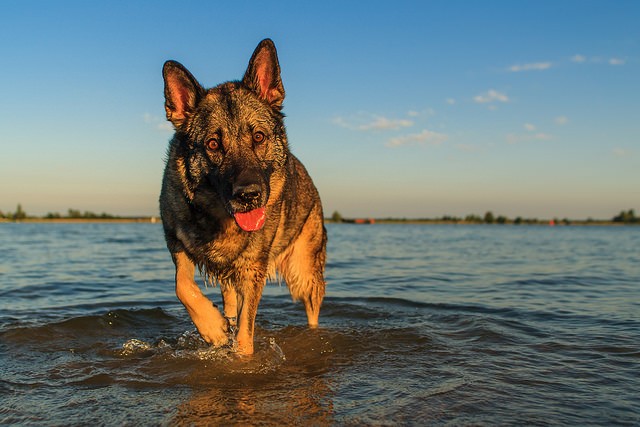
Dog owners who choose to go with a German Shepherd will not be disappointed. These smart, strong and obedient dogs are arguably the most well-regarded dog breed. If this is the canine you decided to adopt, then we have 10 useful German Shepherd training tips you should read beforehand.
Training a GSD is similar to training any other dogs aside from a few exceptions.
The good news is that training a GSD puppy will usually be easier than most other breeds. One of the first and most important German Shepherd training tips any dog expert will give you is that the initial 2 to 6 months of your puppy's life is the foundation for ensuring a harmonious future life together.
Remember that German Shepherd, puppies or not, are pack animals. If you want to have a successful training process, you must become the leader of your two-headed pack. Be the leader, and your GSD will follow you. In short: be confident, provide clear structure and guidance. You should establish an environment of trust between you two using these German Shepherd training tips, accurate training methods and regular repetition.
Use selective hearing

Your GSD puppies will crave your attention. Any attention, good or bad, is always more of a reward while silent treatment isn't. One of the most useful German Shepherd training tips is breaking their bad behaviors by ignoring your pups in certain situations.
When your German Shepherd has done something bad, give them that icy shoulder. Clean up the shredded remains of your favourite pair of shoes, and then ignore your puppy for at least 10 minutes. It's going to be difficult, but make sure you don't give up too quickly, or the message won't get across.
To make it clear that your silence is a punishment, you also need to reward any good behaviors. Your puppy will learn that a good behavior means praise, petting, cuddles, and yummy dog treats. Meanwhile, bad behavior of your dog should always equal silence and boredom. GSDs are very smart dogs: it won't take them long to catch on.
Socialize with your GSD

Once you bring your German Shepherd puppy home, she needs to meet lots and lots of people, and right away. The magic window is between 7 weeks and 16 weeks old. Puppies are most receptive to socialization during this time.
If your puppy meets lots of different people (and dogs!) when she's young, and gets exposure to all of their many looks, sounds, smells, and behaviors, then your puppy will be comfortable with these in the future.
One of the more useful German Shepherd training tips is getting them used to things. For example, when an adult dog has a strange phobia – such as a dislike of people wearing hats – it's usually not because someone with a hat abused her as a puppy. Generally, it simply means that the dog wasn't socialized with that particular look as a puppy, and is wary of this strange and unfamiliar behavior.
Work on bite inhibition
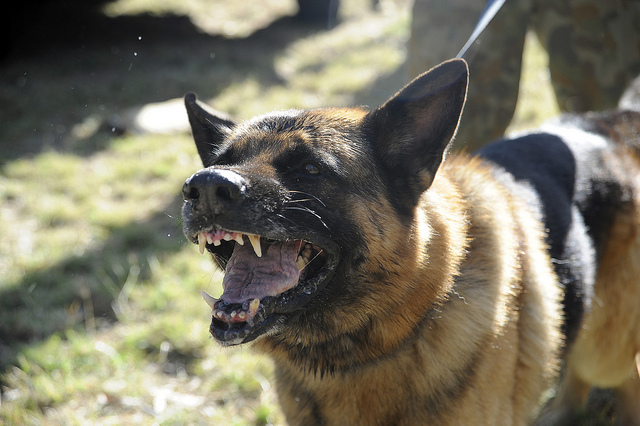
Although this is part of any dog breed training, it's an especially important part of German Shepherd training tips, because large, strong dogs like GSDs need to be taught bite inhibition right away. Sometimes, even a single biting incident can be fatal for your dog.
Puppies do bite, and this is a normal part of dog-on-dog playtime. But your job here is to teach your young pooch that human skin is too thin to take that kind of play. When a puppy nips you, make some sort of high pitched sound. Dogs use these noises to tell their playmates when play gets too rough, and your puppy should understand that he hurt you. Replace your hand with an appropriate dog toy, and then resume playtime.
Keep in mind that some puppies didn't get the memo on squealing, and might think it's just that much more fun to have a human-sized squeaky toy. If that's the case with your pup, try using the silent treatment. Your puppy wants to play, so teach him that biting ends playtime.
Housebreaking is important

Housebreaking is yet another important part of training any dog breed, and German Shepherds are no different. And yes, housebreaking a puppy can become a daunting task if you're not approach it from the right perspective, or you don't have the right set of tools.
The good news is that GSDs are very smart dogs, and should take well to toilet training. You won't have to spend as much time training a German Shepherd dog not to pee inside compared to most other canines.
There's also no difference between toilet training a GSD puppy and most other breeds, so for more German Shepherd training tips on housebreaking see our other toilet training articles.
Incentives are a great tool

When it comes to incentives, not many dogs are different in this regard, and the same goes for German Shepherds – they are most certainly “food motivated.” When training a GSD, know that they'll do anything for that tasty dog treat you've got in your pocket.
Take advantage of whatever motivates your pooch to listen to you. If your dog is food motivated, reward her good behavior with yummy treats. If your dog has a favorite toy, try using that as an incentive instead.
Simply praising and petting your canine tends to work well with smart dog breeds like GSDs, but having a physical reward makes the message that much easier to understand. If you're up for it, you should also consider clicker training: this is a great way of communicating very precisely with your dog.
Diversify your training
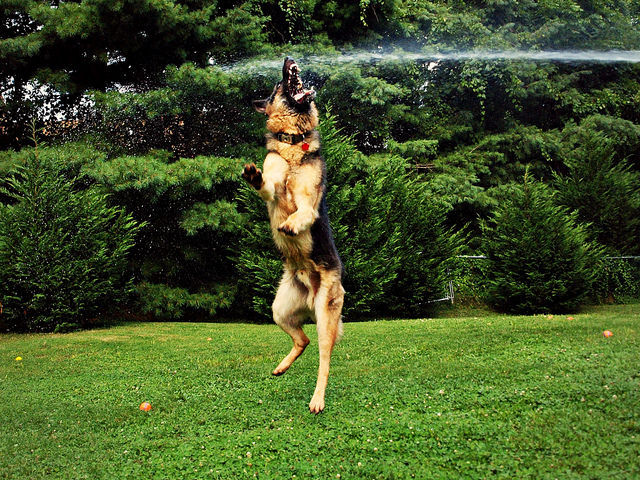
Dogs will have some difficulty generalizing a lesson to a new location. If they are housebroken at your house, they might not understand that the same rules apply at your neighbor's home, too. Just because “come” works in the living room doesn't mean it will work at the dog park.
For this reason, it's important to train your German Shepherd puppy in a wide variety of settings. Since you'll be taking your dog out for exercise and socialization anyway, simply stop for a quick training session every now and then.
Once again, what makes using these German Shepherd training tips easier is the fact that you know you won't need them for too long. Be precise, strict and clear about your intentions, and your clever GSD will soon be following all of your commands.
Teach your GSD some manners
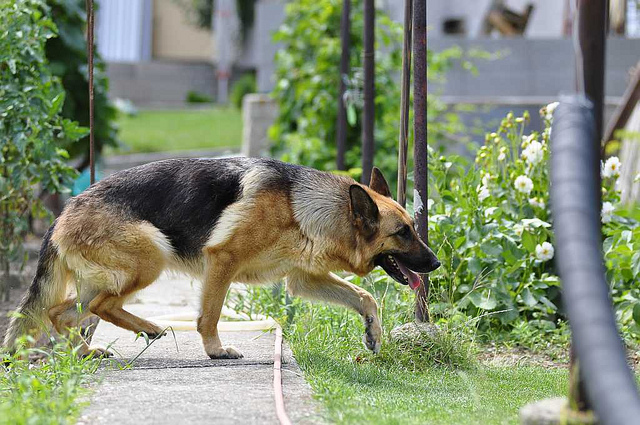
Like humans, dogs need to learn what is and isn't polite, what's good or bad, what's wrong and right. Before bringing home a puppy, decide ahead of time what behaviors will and will not be appropriate in your house, so that you can be consistent with your German Shepherd puppy when the time comes.
Most importantly, your dog should learn to ask for permission. Just as any other dog, your GSD will face situations where something looks tempting to chase/eat/destroy, but you've never explicitly taught her whether this is okay or not. At those times, you want to get your dog's attention and have her wait for you to pass judgement.
Start instilling this reflex by training your GSD puppy to wait. Tell your pooch to sit and stay a couple of meters away while you fill her food bowl. If she ignores your command, take away the food and start over. After the food is ready, stand up and wait a little. Your puppy should be watching you intently. After a few seconds, say “okay” and let your dog eat.
Deal with jumping

Another one of the famous behavior problems among all dogs will be applicable to your German Shepherd puppy as well.
What makes this situation worse is that jumping up on people can be a significant problem for big strong dogs like GSDs. Again, the silent treatment is the best choice for breaking this habit. When you get home, ignore your jumping dog until he has settled down. As soon as he finally stops trying to jump up on you, immediately give him praises and cuddles, and maybe even a yummy treat.
Most of the time, you won't have any trouble teaching your German Shepherd proper etiquette, so this shouldn't be a worry for any future GSD owner.
Leash pulling training
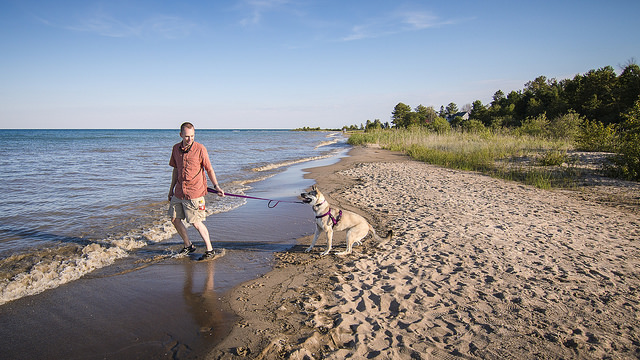
Dogs love to pull on the leash, adult German Shepherds are very strong canines – they can often overpower you on a walk if they catch you off guard. One of the most important German Shepherd training tips is to teach your dog not to pull on the leash while they're still young to save yourself a much harder challenge later on.
Start by using a short leash. Longer, extendable leashes are convenient for letting your dog roam around, but they don't let you communicate with your pet as effectively. If your puppy pulls on the leash, give a sharp pull back and a verbal reprimand.
If you can, train your dog to come on command before trying to walk him on a leash. Whenever he pulls, give a sharp pull and call him back to your side. Your dog will learn that pulling on the leash means he has to walk all the way back to you and wait for you to start walking again.
Lead and GSD shall follow
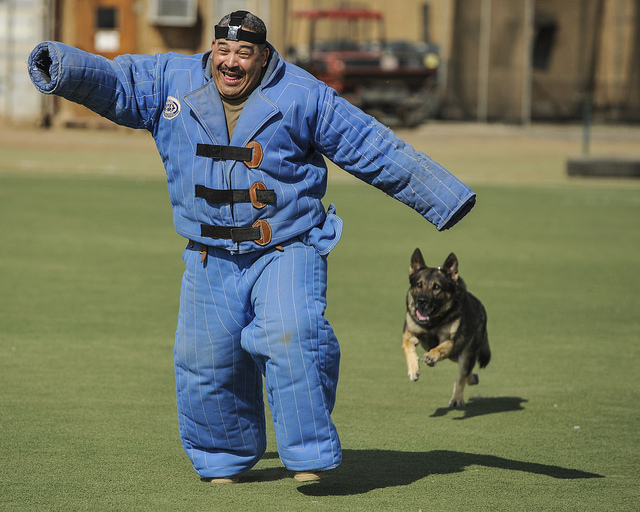
Last and most important one of German Shepherd training tips is to establish your dominance. Dogs are pack animals. Their instincts crave a social hierarchy, and they are more than happy to have a leader to follow.
Whenever you take care of your GSD's needs, including regular physical and mental exercise as well as lots of socialization and playtime, your canine will be eager to please you with good behaviors. They know it's their job and they love doing that.
Always project an air of confidence around your German Shepherd, so that your she knows you are up to the task of being a pack leader. Otherwise, if you look anxious or afraid of taking charge, your dog may try to relieve you from your duties by leading you, instead. Be a strong leader, and your dog will always follow you.
Featured photo courtesy of Harold Meerveld












